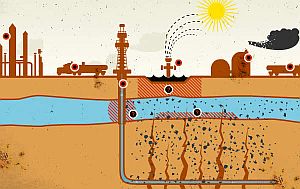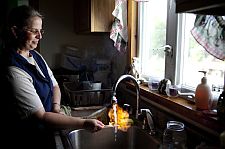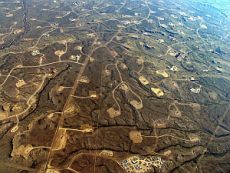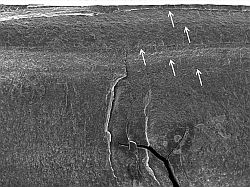The FracTracker Alliance shares maps, data and analyses to communicate impacts of the global oil and gas industry and inform actions that positively shape our energy future.
An analysis of the findings in Governor Andrew Cuomo's 184-page review of hydraulic fracturing.
Under the high plains of the midwest, there is a resource called the Ogallala Aquifer, which is a subsystem of a huge underground mega-system called the High Plains Aquifer.
- The Ogallala Aquifer | Scientific American
- The Ogallala Aquifer | NRDC
- The Ogallala Aquifer | Wikipedia
- The Ogallala Aquifer, an important water resource, is in trouble | September 1, 2013 - The Kansas City Star
Oil Change International was founded in 2005 on the belief that in order to facilitate the necessary transition towards a clean energy future and combat global warming, we must expose and counter the influence of fossil fuel money in politics, work toward a separation of oil and state, and follow the money flows to and from the industry.
- Dirty Energy Money
Dirty Energy Money is an interactive tool that tracks the flow of oil, gas and coal industry contributions to the US Congress.
- Dirty Hands: 77 ALEC Bills in 2013 Advance a Big Oil, Big Ag Agenda
| August 01, 2013
At least 77 bills to oppose renewable energy standards, support fracking and the controversial Keystone XL pipeline, and otherwise undermine environmental laws were introduced in 34 states in 2013, according to a new analysis from the Center for Media and Democracy, publishers of ALECexposed.org. Alternative address: ALEC: American Legislative Exchange Council - ALEC Exposed | Sourcewatch
- Video of the Week
- "Maryland Rises to Stop Cove Point" | June 20, 2014
- "Scientists: Tests prove fracking to blame for flaming Parker County wells" | June 6, 2014
- "No Holiday for Democracy" | May 30, 2014
- "Turning the Tables" | May 23, 2014
- "Why I Disrupted the Pennsylvania Gubernatorial Debate." | May 16, 2014
- "Dryden - The Samll Town that Changed the Fracking Game" | May 9, 2014
- "Don't Frack My Mother" | March 27, 2014
The Constitution Pipeline would bring fracked gas through more than 700 New Yorkers' properties. It would cross 277 streams, ponds and rivers, and over 10 miles of wetland. It would tear a gash through Central New York State, clear-cutting 1000 acres of forest, and ruining over 550 acres of prime farmland. - "The Myth of the Local Fracking Boom: A Denton Shale Gas Short" | March 21, 2014
We’ve seen this myth unravel again and again. Whether it’s Chesapeake Energy stiffing folks on royalties or local Pennsylvanians telling us there were a few jobs for them at first in the oil and gas fields being drilled in their own backyards but they quickly got phased out by guys from Texas, it’s clear fracking is not the local economic savior the industry makes it out to be. - "This Is Our Country: Living With The Wild West Oil Boom" - 30 minutes | March 12, 2014
Video from the Dakota Resource Council on Vimeo
- Stop the Constitution Pipeline
- Constitution Environmental Impact Study | Transit Map
February 13, 2014 - WBNG Action News - Draft Environmental Impact Statement (EIS) | February 12, 2014 - FERC
DEIS on Constitution Pipeline Project and Wright Interconnect Project






 I ran across an anecdote that epitomizes the problem with crack, or fracture, propagation as spelled out in any text on fracture mechanics.
I ran across an anecdote that epitomizes the problem with crack, or fracture, propagation as spelled out in any text on fracture mechanics. This process continues--cracks do not heal themselves, their inherent tendency is to extend--until the constraining energy is surpassed by the internal properties of the material at the crack tip where outward pressure is continually being asserted, in which case we have a runaway or catastrophic propagation of the crack.
This process continues--cracks do not heal themselves, their inherent tendency is to extend--until the constraining energy is surpassed by the internal properties of the material at the crack tip where outward pressure is continually being asserted, in which case we have a runaway or catastrophic propagation of the crack.
